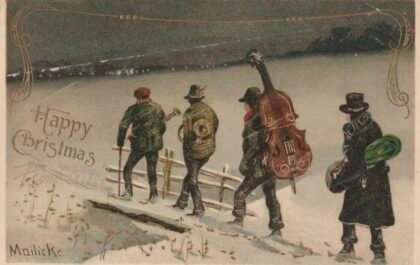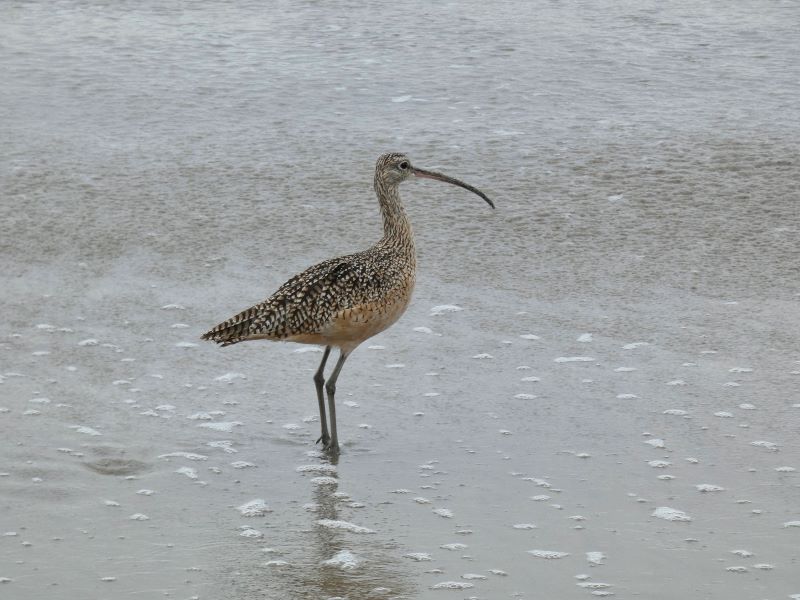
Autumn doesn’t officially begin until the equinox on September 22, but all across North America birds are already on the wing—billions of them. Migration times and destinations vary based on the species and variables like weather and food sources—some birds are already headed south at the start of summer, others won’t arrive at their winter destination until midwinter—but the fall migration usually peaks in late September and early October.
As I write this, an estimated 207,000 birds are passing through Los Angeles County tonight, and that number will rise as autumn advances and the days grow shorter. More than 350 species of bird traverse the California coast during the spring and fall migrations. The Pacific Flyway is one of the four major migratory routes, and this river of birds flows right over the Santa Monica Mountains.
The Western wood pewee that nests under the eaves of the author’s house arrives in April and departs for Mexico in the fall. Sometimes this small, shy bird lingers until October, but this year it is already gone, traveling at night by starlight to its winter home. Ours have a much shorter journey than pewees that summer in Northern Canada and Alaska. Their departure was much earlier.
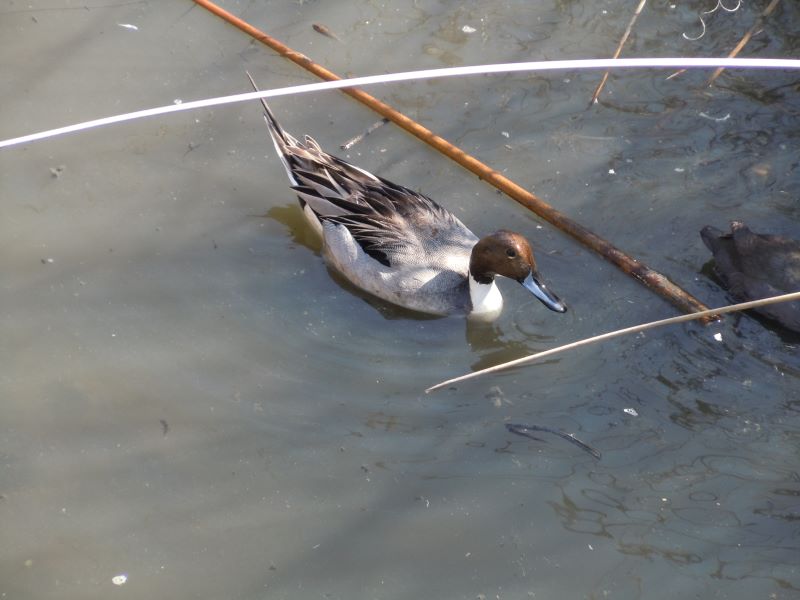
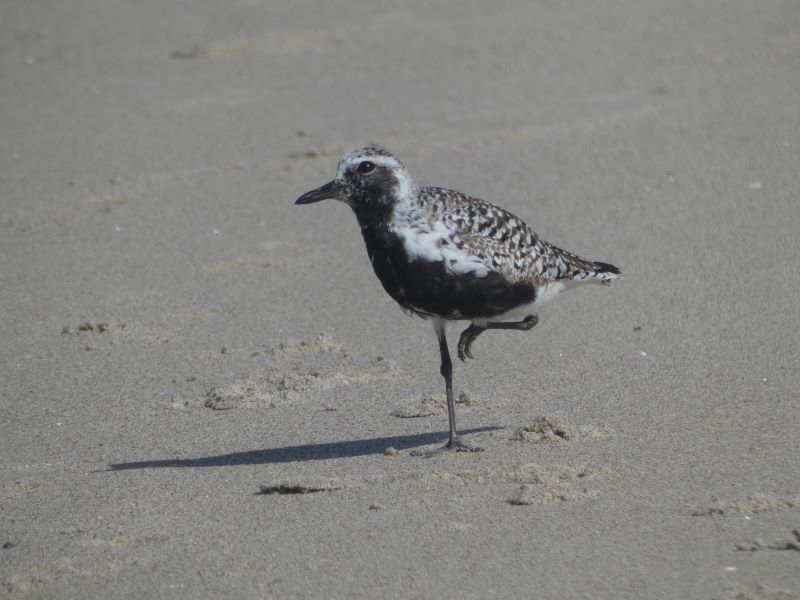
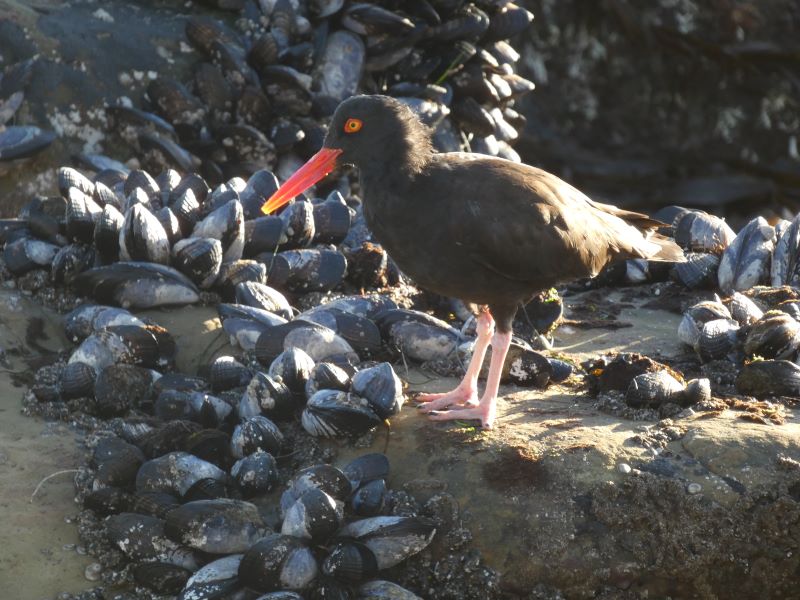
Other local summer birds are also departing: the royal orange and black hooded oriole that builds a hanging nest in the neighbor’s palm tree, the brilliant red and yellow Western tanager, who darts to the birdbath and away again, like a living flame, and the audacious, loud, and acrobatic Western kingbirds, who sit at the tops of the trees and snatch bugs out of the air. I will miss their presence in the garden, but the fall migration is not tinged with the same melancholy here as it is in more northern latitudes. That’s because the Santa Monica Mountains are not only the summer breeding ground for migrants that overwinter farther south, and a welcome break for travelers passing through, it is also the winter home for many species, the destination at the end of the journey. Those winter residents will be arriving any day now, in a colorful and noisy crowd.
White crowned sparrows, common yellowthroats, yellow-rumped warblers, and the tiny, noisy, inquisitive ruby-crowned kinglet that fills the garden with a presence much larger than its small size suggests and are all drawn to the local mountains and spend the winter months here, bringing color and song to the garden. They join the year-round residents, like the scrub jays and mourning doves and brown towhees that come to the birdbath in the morning, and the canyon wren that lives in the willows in the creek beside TNT’s office. Other species are transient. The cedar waxwings and robins may only stay for a day or two, before heading farther south, or they may linger for a few weeks, depending on food supplies and weather conditions.
On the beach, winter residents include oystercatchers, marbled godwits, several species of terns, as well as the long-billed curlew—the largest American shorebird, and a host of sandpipers and gulls. Out in the open ocean species like surf scoters, rhinoceros auklets, and marbled murrelets are arriving from far north. The murrelet is born in the forests of the Washington and Alaska state coast, but spends almost all of its adult life on the open ocean. The scoters breed at northern lakes throughout Canada and Alaska. Some travel to the East Coast, others head to California and Baja. Their trip south comes in two phases—they stop along the way to molt before embarking on the longest part of their journey. Once they are in warmer waters, young scoters sometimes skip the trip back north until they are ready to breed. Who wouldn’t prefer the California sun and surf to an arduous and potentially deadly journey across the Northern hemisphere?
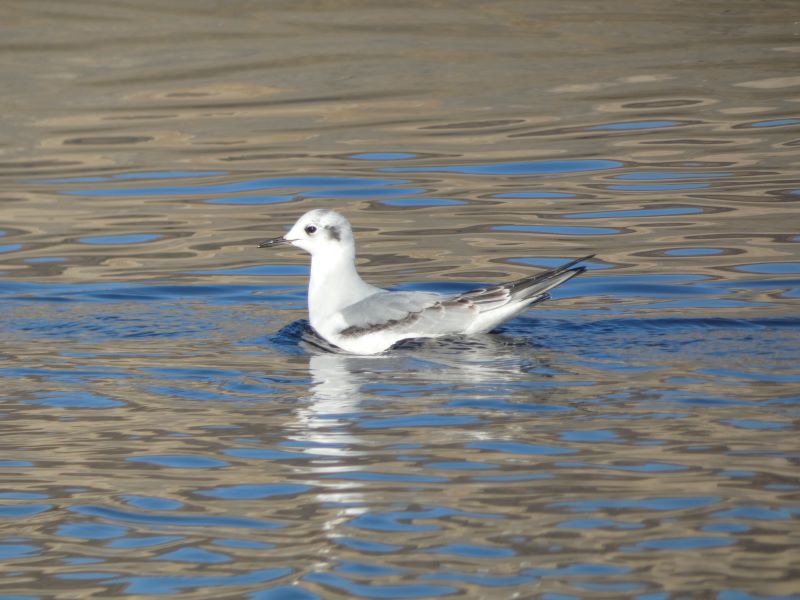
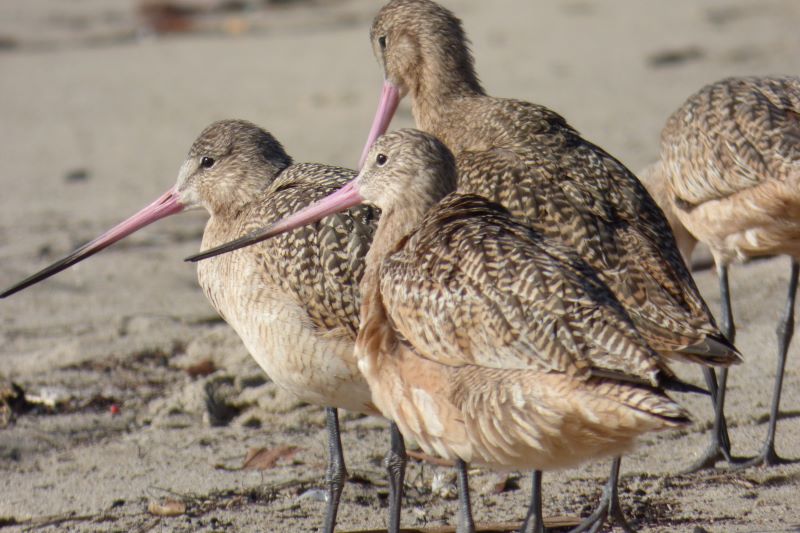
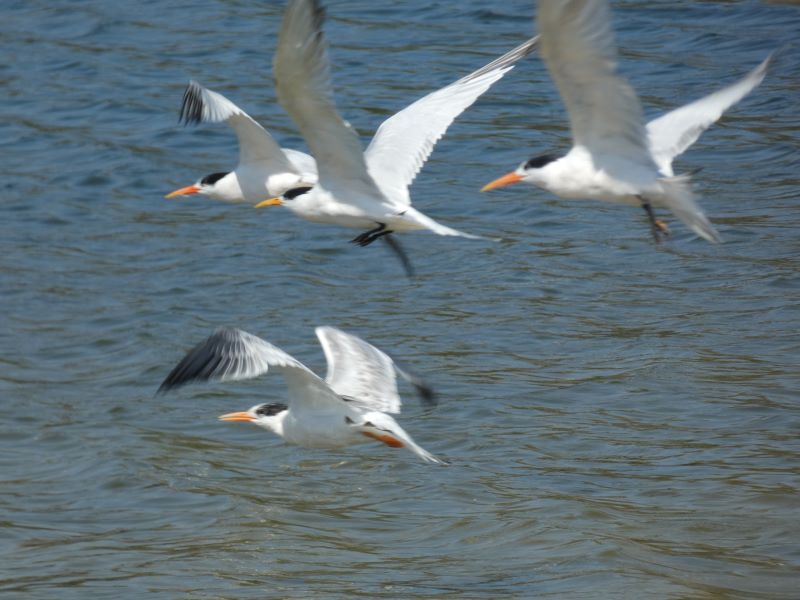
Scoters behave like other waterfowl during the summer, becoming pelagic for the winter. Many other species of waterfowl also overwinter on the California coast, but stick to wetlands, lakes, reservoirs and lagoons—and sometimes the neighbor’s pond or pool—instead of taking to the open ocean. Some are showy: the hooded mergansers are hard to miss—the male with a fancy bouffant crest of black and white feathers on his head, the female with a sort of bird version of the Bride of Frankenstein’s updo, arrive in late October and stay through the winter. The Northern pintail duck is less conspicuous, but this is a remarkable bird that travels all the way from the arctic circle. The pintail heads north as soon as the ice has broken. According to Cornell University Bird Lab data, a pintail can fly as fast as 48 mph., and the longest nonstop flight recorded for this bird was 1,800 miles. If they aren’t shot by hunters or killed by other predators, these birds can live for longer than twenty years. An individual may make this massive journey forty times or more in a lifetime.
There are many species that travel even greater distances. Rufous hummingbirds are a regular presence in local gardens in the winter and spring, dive-bombing the cat and any gardener who trespasses on their territory. When they disappear in late spring it’s because they are headed farther north—much farther. Barely three inches long, this feisty and adventurous bird travels all the way up to Alaska, and then returns in the fall—around-trip journey of as much as 4,000 miles. The bar-tailed godwit is almost never sighted in Southern California, but it passes by offshore this time of year, on a journey that takes it from the Alaskan Tundra to the South Pacific—a non-stop flight of more than 7,000 miles, one way. A related species, the marbled godwit, breeds in central Canada and spends the winter on the local coast.
Rufous hummingbirds migrate by day, but pintails and bar-tailed godwits and even the Western peewit, which isn’t much bigger than the hummingbird, all depend on darkness for safe passage. Not only does the night provide safety, there is increasing evidence that many species of birds use the stars to help navigate.
Humans can help migratory birds by simply closing the shades or curtains at night and turning off any unnecessary light—including all exterior lighting—during late September and early October. There are too many people in Los Angeles for lights out to make a measurable difference, but in communities like Topanga it really does have the potential to help.
We may not see them or hear them, but every night from sunset to just before dawn all through autumn the sky is full of birds—long distance travelers, guided by the stars and the pull of earth’s magnetic fields, winging their way to a destination that could be as close as a Topanga backyard, or as far away as the warm blue waters of the South Pacific. Godspeed the travelers.
Many birds take up winter residence in the garden, taking advantage of amenities like birdbaths and fruit trees. Although we see these birds frequently in the winter months it can be challenging to tell them apart. Here are some of the most charismatic backyard birds.
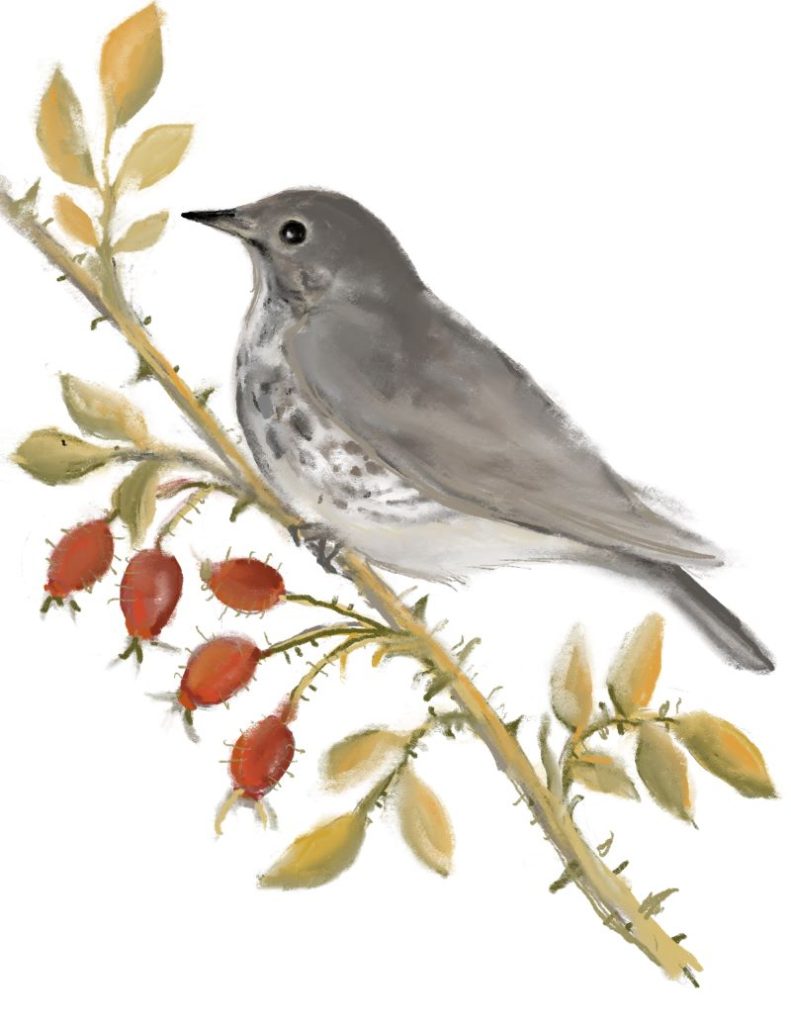
The hermit thrush is a shy, quiet bird. In its northern summer home, this species is known for its beautiful song, but hermit thrushes are less likely to sing during their winter stay. This bird’s spotted feathers help it blend into the background, but it is often fearless around humans, splashing enthusiastically in the birdbath or foraging for spiders and other insects on the patio or in the shrubs. The pale ring around the hermit thrush’s eye gives it a perpetually surprised expression and distinguishes it from a host of other small brown and gray winter birds.
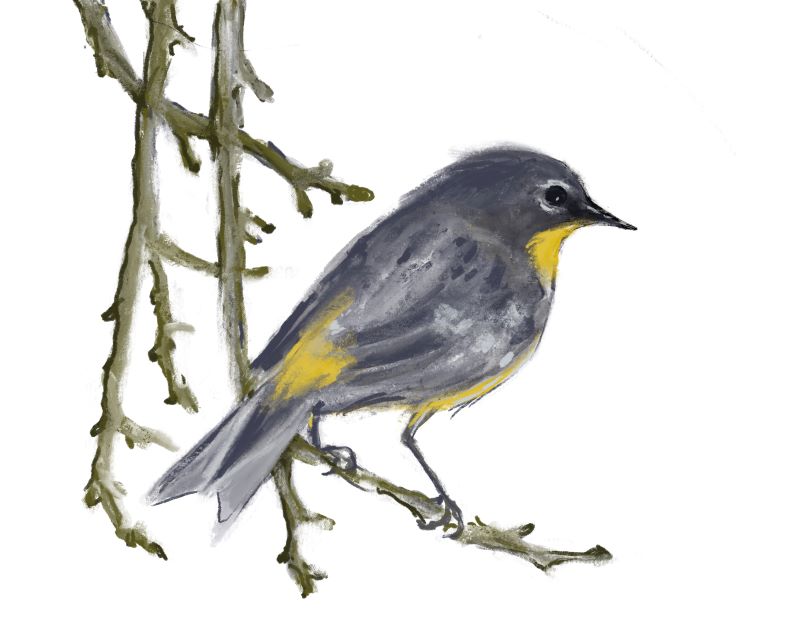
Warblers can confound even the experts. This is a large family of similar birds. The yellow-rumped warbler is one of the most frequently seen—and heard. They poke around the garden trees, catch insects midair, and hunt for berries and other fruit in the bushes.The western variant—Audubon’s yellow-rumped warbler—not only has the characteristic yellow patch on its backside, it also has yellow patches on the face and wings. Yellow-rumped warblers are vocal birds that fill the garden with calls and whistles. When they leave in the spring the garden feels empty without them.
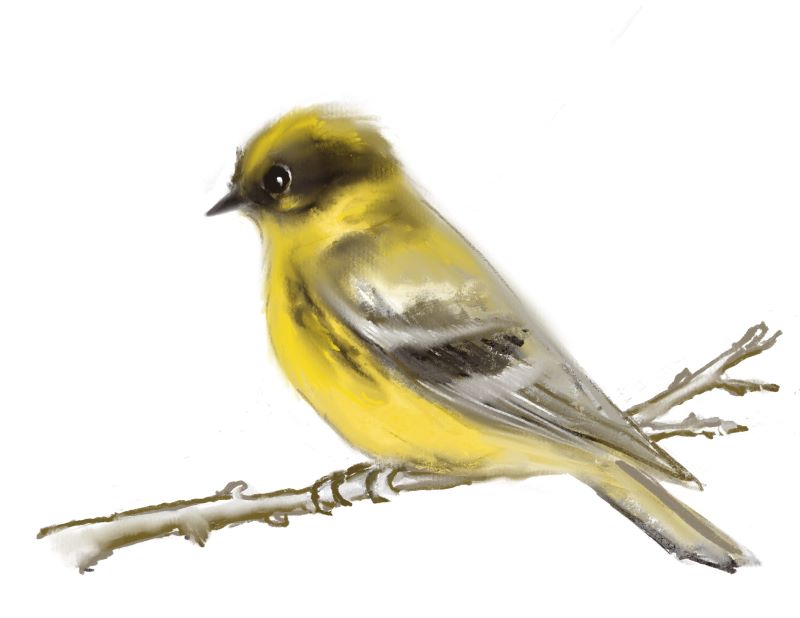
Townsend’s warbler looks a lot like the yellow-rumped warbler, but this species doesn’t have the yellow rump feathers and it rocks a black eye-mask and sleek white racing stripes on its wings. This little warbler is also a frequent garden resident, and seems to enjoy the company of other warblers. It’s an acrobatic insect hunting, “hawking” insects.
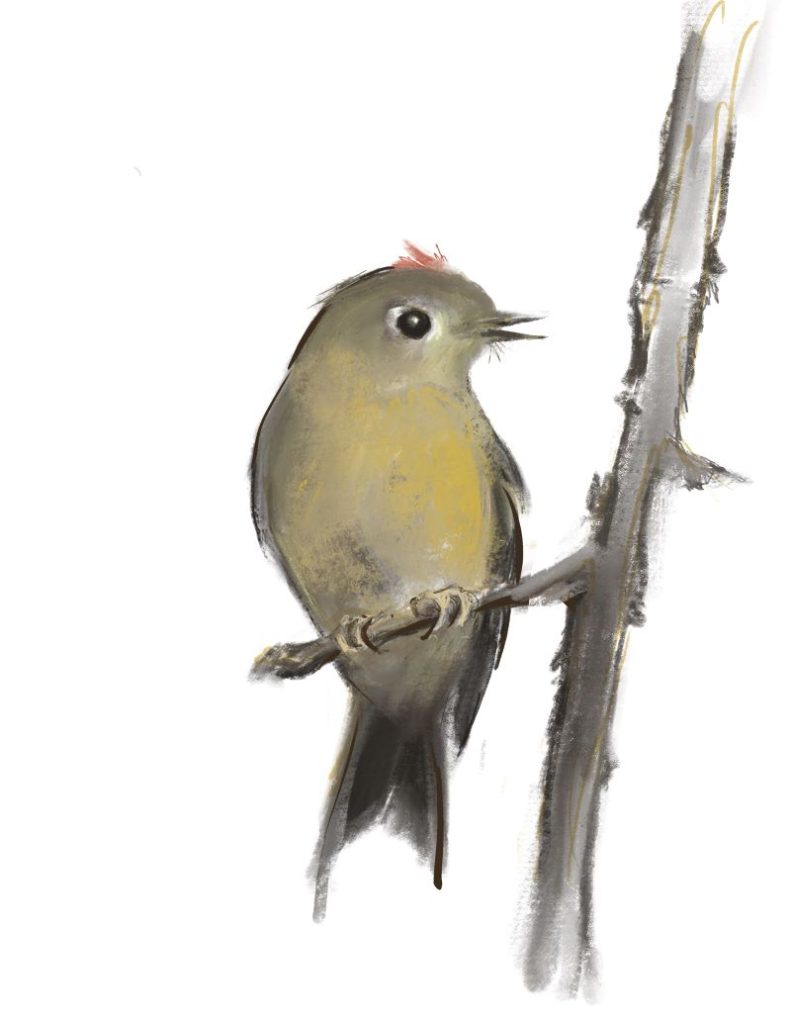
The ruby-crowned kinglet is tiny, hardly bigger than a hummingbird, but it is loud and fearless, hunting for insects in the garden, calling from the tops of the oak trees, flashing its red crest of feathers, like a very small cavalier throwing down the gauntlet to larger birds. Its yellow-green feathers can easily be mistaken for a host of other winter birds, but its bold behavior and the bright eyes with their white eye-ring can only belong to the kinglet. This tiny bird flies all the way from the boreal forests of Canada and the Pacific Northwest to winter here
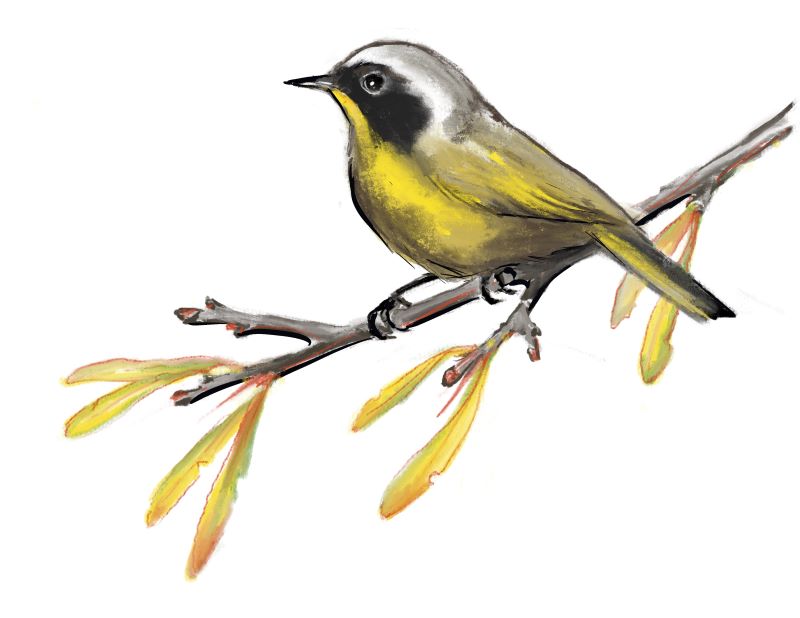
The male common yellowthroat wears a sleek black mask over his yellow feathers, like an old-school highwayman or a member of Marvel’s X-Men. Females are a more subdued yellow and do not have the mask, but both males and females sing their characteristic song: “witchery, witchery witchery,” as the hunt for insects among the underbrush. This is a friendly and inquisitive bird that seems to like to watch humans much the way humans watch birds.
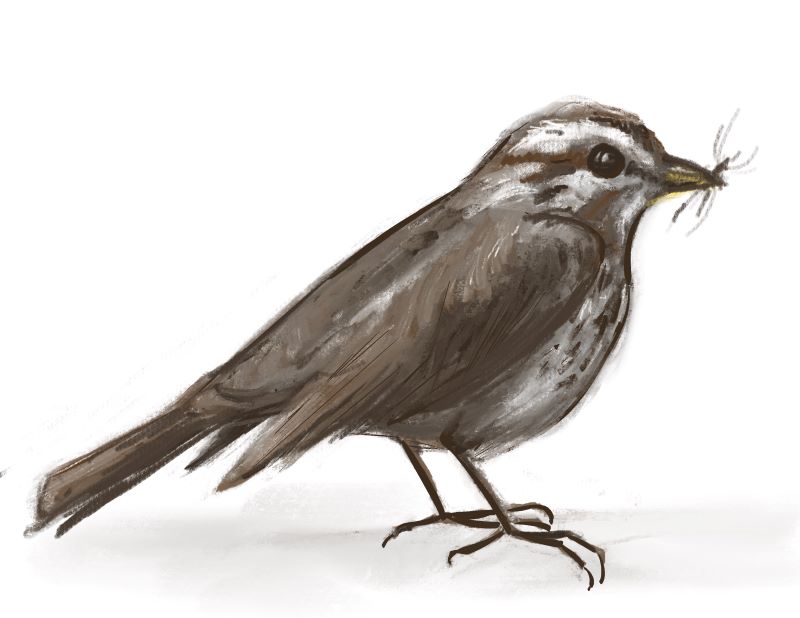
The white-crowned sparrow is a ubiquitous winter presence in the Santa Monica Mountains, but these small birds travel more than 2,000 miles to reach their winter home. White-crowned sparrows are territorial. The ones that appear each winter at the birdbath or in the backyard bushes are probably the same ones who come every year—the oldest known white-crowned sparrow lived to be 14. All winter long these birds sing and chatter, splashing in the birdbath, rummaging for bugs and seeds in the garden, but they leave in early spring, heading back to Alaska. Their California winter vacation is necessarily short.
